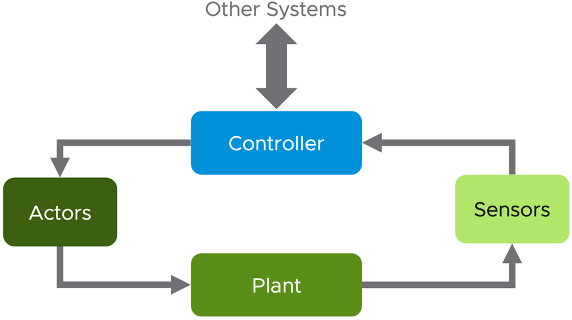1. Introduction
I bet you still remember that part “Yes, I did not cover Automation. For me, that’s part of Architecture. You should not automate what you cannot operate.”
In other words, what you can operate should be automated.
And “Using an analogy, it’s like a plane with many automation features. That’s a feature of the plane.” The times where pilots had to do everything manually while flying a plane are long gone. Nowadays a modern plane is supporting the crew through automation - think of the autopilot.
vRealize Operations is doing automation out of the box in form of automated control routines; it is “automatically” monitoring the environment thorough pre-defined or custom Symptoms, Alert Definitions and Compliance Packs. These routines control the creation of Alarms and provides information presented through Dashboards and Reports.
Various Compliance Packs help reduce risk and enforce IT and regulatory standards for vSphere through continuous checks and automated drift remediation.
But there is more.
And this is exactly how you should operate your environment. Self-Driving Operations should not remain just a catchword, let us make it a reality!
Benefits
Probably everybody knows the impact automation has on the industry, not only since the invention of industrial robotics in the 50s and 60s of the last century.
But why is automation important, what are the reasons behind introducing a technology which may be complex and cost intensive as it might appear at first sight?
Yes, automation may indicate that you will need to invest time initially, and time means money. You are making a one-time invest or if you will, increasing your CAPEX.
What does it give you back? The answer is actually pretty easy:
- Repetitive work does not have to be done manually anymore; you are reducing your OPEX
- You free up time to focus on more important things for your business
- Repetitive work is done the same way, following a descriptive procedure, eliminating human errors (except for the ones in your procedure)
- It makes auditing easier or even possible in first place
- It increases productivity, reliability and performance
- Automation is work force multiplier
Basic Principles of Automation
Before we jump into the essentials of this chapter, let us take a quick look on the typical ingredients of automated systems. The following picture shows the four basic elements comprising an automated system. Controller, sensors, actors and the plant build a closed loop.

This is example of a closed is also called closed-loop feedback control. Another, less complex kind of automated system is shown in the next picture. It is a so called open-loop control.

How does this translate to an environment managed by vRealize Operations? Let us start with the less complex example, the ingredients are at the end the same in both examples.
As you can see in the next figure, some parts are easy to be mapped to components that you will find in your SDDC.

The sensors are our adapter instances collecting metrics and properties, the controller is vRealize Operations itself and the plant that we would like to control or automate is e.g., our vCenter instance managing ESXi hosts, VMs, Datastores etc.
But what are the actors and how could the controller, so vRealize Operations, interact with other systems?
I will answer both questions in the next sections, so keep reading, you have made it through the dry theory.
Inter-System Communication
I start with the second part of the question; how can vRealize Operations interact with other systems?
With “other systems” I am referring to systems contributing to the automation but not necessarily being the plant we want to control.
Many customers have extended vRealize Operations to interact with other systems using interfaces provided by those systems. In context of automation, we usually use the term Application Programing Interfaces - APIs. Interacting with other systems means outgoing as well as incoming communication as seen from the vRealize Operations perspective.
This page was last updated on July 1, 2021 by Stellios Williams with commit message: "Added image alt-text, re-added links, cleaned Markdown, re-wrote most tables in Markdown"
VMware and the VMware taglines, logos and product names are trademarks or registered trademarks of VMware in the U.S. and other countries.